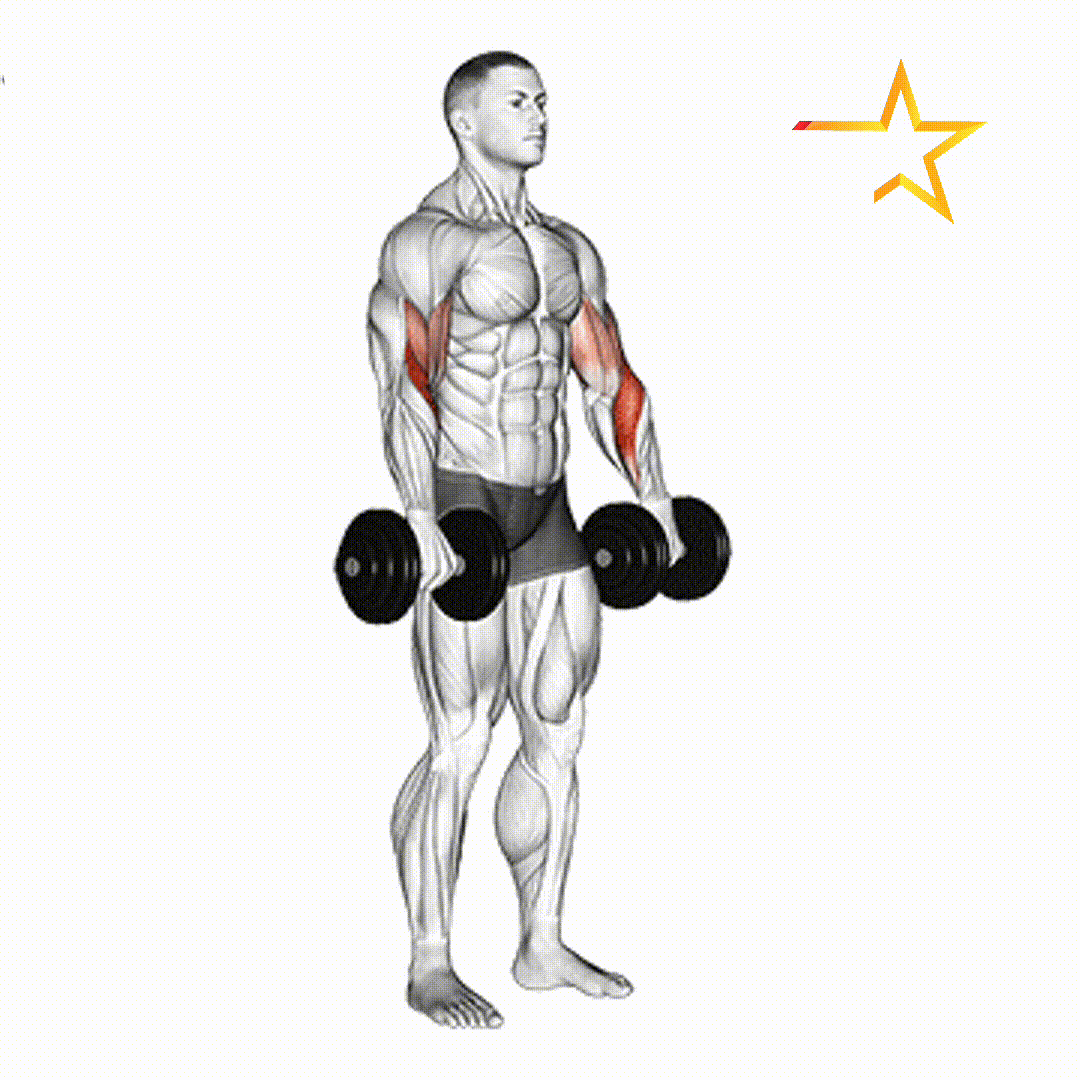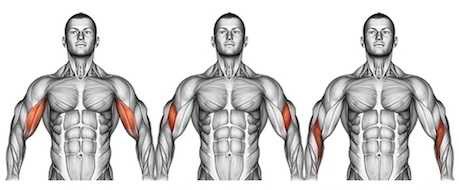DUMBBELL REVERSE CURL
Learn How To Do Dumbbell Reverse Curl And Its Benefits
HOW TO DO DUMBBELL REVERSE CURL


MUSCLE GROUPS
Primary:
Forearm
Equipment:
Dumbbells
Dumbbell Reverse Curl: Strengthen Your Forearms and More
The dumbbell reverse curl is a straightforward yet effective strength training exercise that targets the forearms, primarily the brachioradialis, and can also engage the biceps and brachialis muscles. This exercise is valuable for building forearm strength and size, and it's an excellent addition to any arm-focused workout routine. Let's explore how to perform the dumbbell reverse curl and its associated benefits in more detail:
How to Perform Dumbbell Reverse Curl:
Starting Position: Stand with your feet shoulder-width apart and hold a dumbbell in each hand at arm's length in front of your thighs. Your palms should be facing downward, creating an overhand (pronated) grip.
Form: Keep your elbows close to your sides and exhale as you curl the dumbbells upwards towards your shoulders by flexing your elbows. Maintain a straight wrist throughout the movement, with your palms facing down.
Return: Inhale as you lower the dumbbells back down to the starting position in a controlled manner, maintaining the overhand grip throughout.
Personal Trainer Tips:
Maintain proper form throughout the exercise, avoiding any swinging or momentum.
Keep your upper arms stationary; only your forearms should move during the curl.
Use a weight that allows you to perform the exercise with proper form and control. Start with lighter weights if you're new to this exercise.
Perform the exercise in a slow and controlled manner for maximum effectiveness.
Biceps


Dumbbell Reverse Curls vs. Regular Biceps Curls: Which is Right for You?
Dumbbell reverse curls and regular biceps curls are both popular exercises for targeting arm muscles, but they have distinct differences in terms of the muscles they work and their benefits. Here's a comparison to help you decide which exercise is right for you:
Dumbbell Reverse Curls:
Primary Muscle Worked: Brachioradialis (Forearm Muscle)
Secondary Muscles Worked: Biceps, Brachialis (Upper Arm Muscle)
Benefits:
Forearm Strength and Size: The primary benefit of the dumbbell reverse curl is its ability to target and strengthen the forearm muscles, particularly the brachioradialis. This muscle plays a significant role in forearm flexion and contributes to grip strength. Building this muscle can improve your forearm strength and size, enhancing your ability to perform everyday tasks and lift heavier objects.
Balanced Arm Development: Many individuals focus primarily on bicep exercises to build larger arms, but neglecting the forearms can lead to imbalances in arm development. Incorporating dumbbell reverse curls into your routine helps address this by working the forearms and promoting balanced arm development.
Grip Strength: Strong forearm muscles are essential for grip strength, which is valuable for various exercises and daily activities that involve holding or lifting objects. The improved grip can have a positive impact on your overall strength training progress.
Variation: Adding dumbbell reverse curls to your arm workout routine provides variety and targets different muscles than traditional bicep curls. This diversity can help keep your workouts engaging and effective.
Overall Arm Definition: While the primary focus is on the forearms, the dumbbell reverse curl also engages the biceps and brachialis to a lesser extent. This can contribute to overall arm definition, especially when combined with other arm exercises.
Regular Biceps Curls:
Primary Muscle Worked: Biceps Brachii (Upper Arm Muscle)
Secondary Muscles Worked: Brachialis, Brachioradialis (Forearm Muscle)
Benefits:
Biceps Development: Traditional biceps curls directly target the biceps brachii, the primary muscle responsible for bending the elbow. These curls are effective for building biceps size and strength.
Versatility: Biceps curls can be performed with various equipment, such as dumbbells, barbells, EZ bars, and cable machines, providing versatility in your workouts.
Heavier Weights: Compared to dumbbell reverse curls, regular biceps curls often allow for the use of heavier weights. This can be advantageous for those looking to maximize biceps growth and strength.
When to Use Each Exercise:
Dumbbell Reverse Curls: Consider using dumbbell reverse curls when you want to target your forearm muscles specifically, improve grip strength, or address arm muscle imbalances. They can also be beneficial as a complementary exercise to regular biceps curls to achieve balanced arm development.
Regular Biceps Curls: Opt for regular biceps curls when your primary goal is to build larger biceps or you have access to various equipment that allows you to lift heavier weights. These curls are a classic choice for biceps development.
Ultimately, both exercises have their place in a comprehensive arm workout routine. Incorporating both dumbbell reverse curls and regular biceps curls in your training regimen can provide a well-rounded approach to arm development. You can alternate between these exercises, perform them on different days, or combine them within the same workout to keep your muscles challenged and promote balanced arm development over time.
